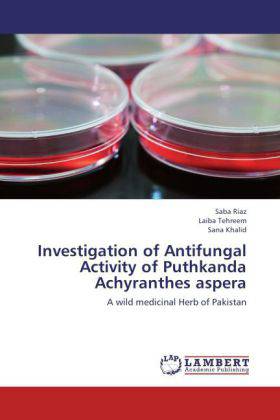
- Afhalen na 1 uur in een winkel met voorraad
- Gratis thuislevering in België vanaf € 30
- Ruim aanbod met 7 miljoen producten
- Afhalen na 1 uur in een winkel met voorraad
- Gratis thuislevering in België vanaf € 30
- Ruim aanbod met 7 miljoen producten
Zoeken
Investigation of Antifungal Activity of Puthkanda Achyranthes aspera
A wild medicinal Herb of Pakistan
Saba Riaz, Laiba Tehreem, Sana Khalid
Paperback | Engels
€ 59,95
+ 119 punten
Omschrijving
Ethnobotany is a specialty in botany that studies the lore and uses of plants as illustrative of the customs of a (usually primitive) society. The aim of Ethnobotany is to study how and why people use and conceptualize plants in their local environments.The present study had been designed to evaluate potential antifungal compounds from ethnomedicinal plant namely Achyranthes aspera or PUTHKANDA known in PAKISTAN due to its relation with people. Puthkanda is an erect herb, 0.3-1meter high with stiff branches terete or absolutely quadrangular, striate, pubescent, leaves few, usually thick, elliptic-obovate, petiolate, acute and entire. It is an important medicinal plant so I have chosen it. The study was done on Achyranthes aspera seeds (in the dormancy phase) as well as all plant parts. In order to achieve this goal the aqueous and other organic solvents were evaluated for their antifungal activity against the target fungi i.e Aspergillus niger. Methanol inhibited 95% growth of Aspergillus niger.
Specificaties
Betrokkenen
- Auteur(s):
- Uitgeverij:
Inhoud
- Aantal bladzijden:
- 88
- Taal:
- Engels
Eigenschappen
- Productcode (EAN):
- 9783659181382
- Verschijningsdatum:
- 13/07/2012
- Uitvoering:
- Paperback
- Afmetingen:
- 152 mm x 229 mm
- Gewicht:
- 141 g

Alleen bij Standaard Boekhandel
+ 119 punten op je klantenkaart van Standaard Boekhandel
Beoordelingen
We publiceren alleen reviews die voldoen aan de voorwaarden voor reviews. Bekijk onze voorwaarden voor reviews.








